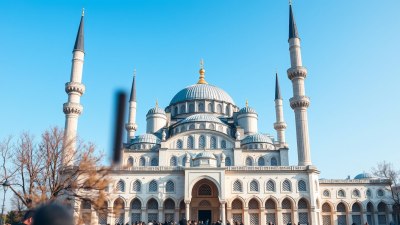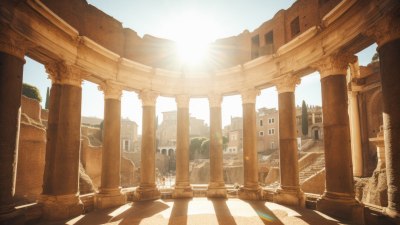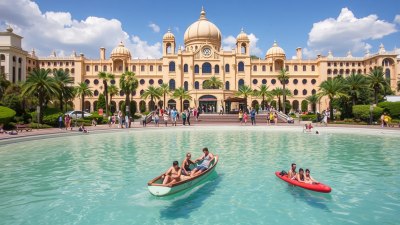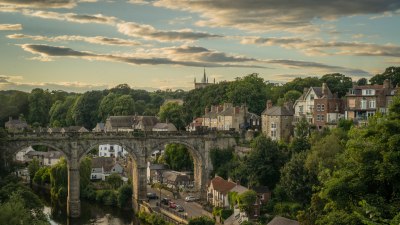The Blue Mosque in Turkey Wants Silence, Not Selfies
Discover the Blue Mosque's call for tranquility over photography in a beautiful historical site.

The Blue Mosque, officially known as Sultan Ahmed Mosque, stands majestically in Istanbul, Turkey, as a testament to the glory of Ottoman architecture. A remarkable blend of stunning aesthetics and profound spirituality, it has been a symbol of the city for centuries. However, in recent times, the management of this iconic monument has taken a firm stance on a pressing issue: the need for silence and reflection, rather than the incessant click of cameras and mobile devices. This unusual shift emphasizes the mosque's status as a sacred place of worship over a mere tourist attraction.
This initiative is seen as an attempt to strike a balance between maintaining the mosque's sanctity and catering to the millions of visitors it receives annually. The mosque, completed in 1616, features splendid blue tiles, grandeur domes, and captivating minarets that speak volumes of its historical importance. Yet, with this beauty comes the challenge of preserving an atmosphere that fosters contemplation and connection with the divine. The mosque's management has noted that the overwhelming presence of tourists taking selfies often distracts from the intended experience of peace and reverence.
The Rise of Selfies
In the age of social media, the act of taking selfies has become ubiquitous. Many individuals visiting the Blue Mosque wish to capture the essence of their journey to share with friends and followers on platforms such as Instagram and Facebook. While this can promote cultural appreciation and tourism, it also risks commodifying sacred spaces. The management of the Blue Mosque holds the belief that the influx of these distractions has overshadowed the intended purpose of the mosque as a place for prayer and reflection.
Selfies often involve loud interactions, flashes, and movement, all of which contradict the serene atmosphere typically sought in a place of worship. Each day, countless worshippers arrive to perform their prayers, seeking solace amidst the chaos of daily life. They come to connect spiritually and find peace, but this experience can be disrupted by the hustle and bustle brought on by a heavy tourist presence.
A Call to Worshippers and Tourists
In response to these concerns, the mosque's administration has begun implementing policies designed to promote a quieter, more respectful atmosphere. Visitors are encouraged to approach the site with a mindset focused on reverence rather than photography. Signage and announcements guide tourists to understand that respectful silence is expected while inside the mosque. This initiative aims to remind all visitors of the mosque's primary function as a place of worship, one that deserves quiet respect and contemplation.
Moreover, during prayer times, access to certain areas of the mosque has been restricted to prioritize the worshippers. Non-Muslim visitors are welcome to explore the mosque, yet they must do so with consideration for those who are praying. This approach is especially important during Friday prayers, when the mosque is at its busiest and the atmosphere is thick with spirituality.
The Role of Education
Education plays a crucial role in this initiative. The management of the Blue Mosque understands that many visitors arrive uninformed about the cultural and religious significance of the site. They are developing educational programs and informational materials aimed at enhancing visitors' understanding of the mosque's history and its role as a place for Muslim worship. Providing context can foster a deeper appreciation and encourage a more respectful demeanor among guests.
These programs aim to explain that the Blue Mosque is not merely an architectural gem to be photographed but a living place of faith, where believers undertake rituals that have been performed for centuries. Educating the public about the importance of silence, reflection, and respect within the mosque’s walls is essential in safeguarding the sanctity of this remarkable site.
Community Response
Local worshippers have expressed appreciation for the mosque’s efforts to maintain a serene environment. Many argue that the, “selfie culture” detracts from the gravity of the space, transforming what should be a sacred experience into a fleeting moment for social media. The sentiments resonate profoundly with those who have a deep-rooted connection to the mosque, viewing it as a vital aspect of their spiritual journey.
The Impact of Social Media
While the mosque's initiative may seem daunting in the face of a selfie-obsessed culture, it is crucial to remember that social media is a double-edged sword. On one hand, it serves as a tool for promotion, increasing the mosque's visibility on a global scale. Awe-inspiring images shared online can inspire future visitors to experience the beauty of the mosque firsthand. Conversely, excessive focus on the aesthetic aspect of the mosque can diminish the focus on its spiritual significance.
A number of social media influencers and travel bloggers have begun advocating for more responsible tourism practices. By urging their followers to respect sacred sites and the people who inhabit them, they aim to promote mindful tourism that fosters cultural sensitivity. This type of approach encourages individuals to celebrate their travels without compromising the sanctity of places like the Blue Mosque.
Future of Cultural Heritage Sites
The Blue Mosque stands at a crossroads where tradition meets modernity. As a globalized world continues to embrace changing methodologies of travel and interaction, it poses unique challenges for cultural heritage sites around the globe. The call for silence and respect within the walls of the mosque symbolizes a wider conversation about protecting sacred spaces while accommodating the ebb and flow of tourism.
Efforts at the Blue Mosque to enforce quietness are part of broader trends seen in other places of worship across the world. Sites such as the Vatican and various temples in Asia also emphasize the importance of peace and reflection over photography. As awareness grows over the value of preserving the sanctity of these iconic sites, similar policies may emerge in locations frequented by tourists seeking spiritual enlightenment.
In conclusion, the Blue Mosque’s plea for silence instead of selfies encapsulates the delicate dance of preserving cultural and spiritual heritage in today’s fast-paced world. As the mosque navigates this terrain, it serves as a reminder for both tourists and worshippers alike: sometimes, the most profound experiences transpire in moments of quiet reflection rather than through the lens of a camera.











